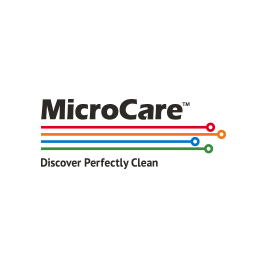Tergo™ SFR Flux and Ionics Cleaning Fluid (3M Novec™ 72DA Replacement)
Product Information
Tergo SFR is ideal for removing ionic residues and tenacious, high-temperature fluxes
Applications:
- Displaces iconic particulate and cleans ionic residues
- Difficult flux removal
- Precision cleaning of metals, alloys and composities
- Particle displacement
- Carrier solvent for fluorinated polymers, oils and greases
- Drying agent after cleaning with hydrocarbons or alcohols
- Removes tenacious, high-temperature fluxes in lead-free and no-clean solder pastes
- An excellent replacement for HCFCs, nPB, TCE, HFEs, Chemours™ Vertrel™, Solvay Solvokane™ and HFCs
- Good alternative for 3M Novec™ 72DA fluid
Features:
- Thermally and hydrolytically stable
- Non-flammable
- Hi Kb cleaning power
- Low Global Warming Potential (GWP)
- Zero Ozone Depleetion Potential (ODP)
- Fast Drying
- Low surface tension, low viscocity, high liquid density
- Excellent permeability
- Azeotrope-like blend
- Recoverable by simple distillation
- Can be used with ulatrasonicse
Tergo SFR is an azeotrope-like mixture of trans 1,2-dichloroethylene, alcohol and advanced fluorinated fluids. It is ideally suited for use in vapor degreasing and vacuum degreasing equipment. Tergo SFR offers improved solvency for polar soils, organic resins and inorganic salts found in no-clean fluxes. The low surface tension, high density and non-flammable properties of Tergo SFR make it an ideal vapor degreasing solvent for tight circuitry.
Tergo SFR has “zero” ozone depletion potential and low Global Warming Potential (GWP). It is hydrolytically stable and therefore does not require chemical stabilizers or booster to prevent it from breaking down in the presence of excess water or mild acid-base activators.
Tergo SFR is designed to replace conventional vapor degreasing solvents such as TCE, nPB, HCFCs, and HFCs. While it was specially designed for removing flux residues and displacing ionic particulate, Tergo SFR can also be used for cleaning oils and greases, flushing or as a carrier fluid for fluorinated, chlorinated, silicon and hydrocarbon mixtures.
Product Details
Product Image |
Part Number | Package | Weight | Size | Technical Data Sheet | Safety Data Sheet |
|---|---|---|---|---|---|---|

|
TSFRL Novec 71DA Novec 72DA MCC-TSFRL | Steel | 1.13 kg 2.5 lbs. | 1 L 1 Quart | ||

|
TSFRG Novec 72DA Novec 71DA MCC-TSFRG | Metal | 4.5 kg 10 lbs. | 3.5 L 1 Gallon | ||

|
TSFRP Novec 71DA Novec 72DA MCC-TSFRP | Pail | 20.4 kg 45 lbs. | 18.93 L 5 Gallons | ||

|
TSFRD Novec 71DE Novec 72DE Novec 73DE MCC-TSFRD | Drum | 226.8 kg 500 lbs. | 208.2 L 55 Gallons |
| Part Number | MCC-TSFRL | MCC-TSFRG | MCC-TSFRP | MCC-TSFRD |
|---|---|---|---|---|
| Package | Steel | Metal | Pail | Drum |
| Weight | 1.13 kg 2.5 lbs. | 4.5 kg 10 lbs. | 20.4 kg 45 lbs. | 226.8 kg 500 lbs. |
| Size | 1 L 1 Quart | 3.5 L 1 Gallon | 18.93 L 5 Gallons | 208.2 L 55 Gallons |
| Technical Data Sheet | ||||
| Safety Data Sheet |
| Appearance | Clear, colorless |
|---|---|
| Odor | Slight |
| PEL (ppm, 8-hr TWA) | 200 ppm |
| Boiling Point | 47°C/117°F |
| F-Gas Compliant | |
| Evaporation Rate | <1 |
| Cleaning Strength (Kb) | 128 |
| Active Ingredients | Trans 1,2-dichloroethylene, alcohol and advanced fluorinated fluids |
| Flashpoint | None, nonflammable |
| Global Warming Rating (100yr) | 32 |
| Ozone Impact | Zero |
| RoHS & WEEE Compliant | |
| Safety Rating | Non-flammable |
| Specific Gravity | 1.23 |
| Surface Tension | 20 Dy/cm |

